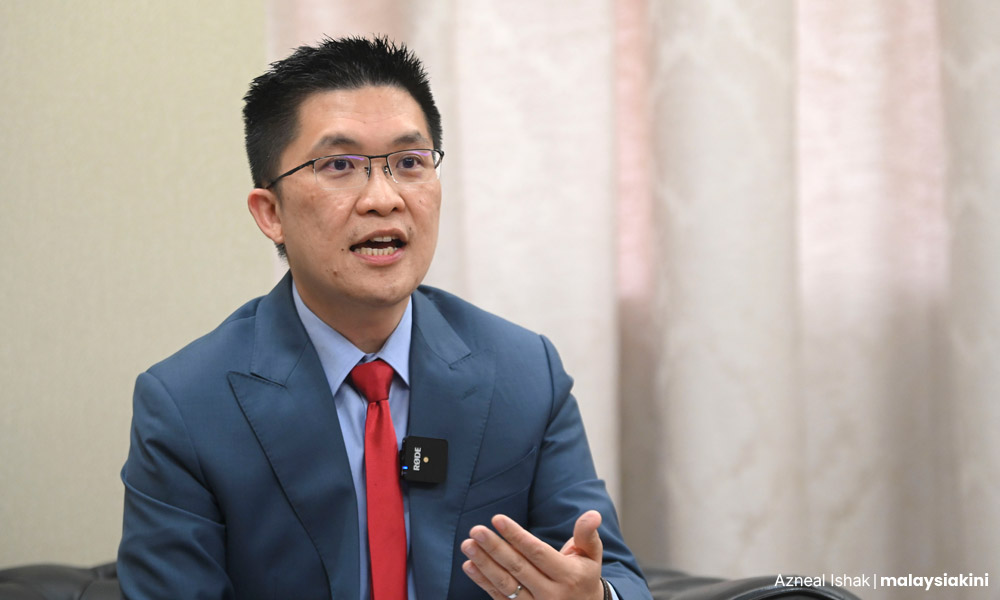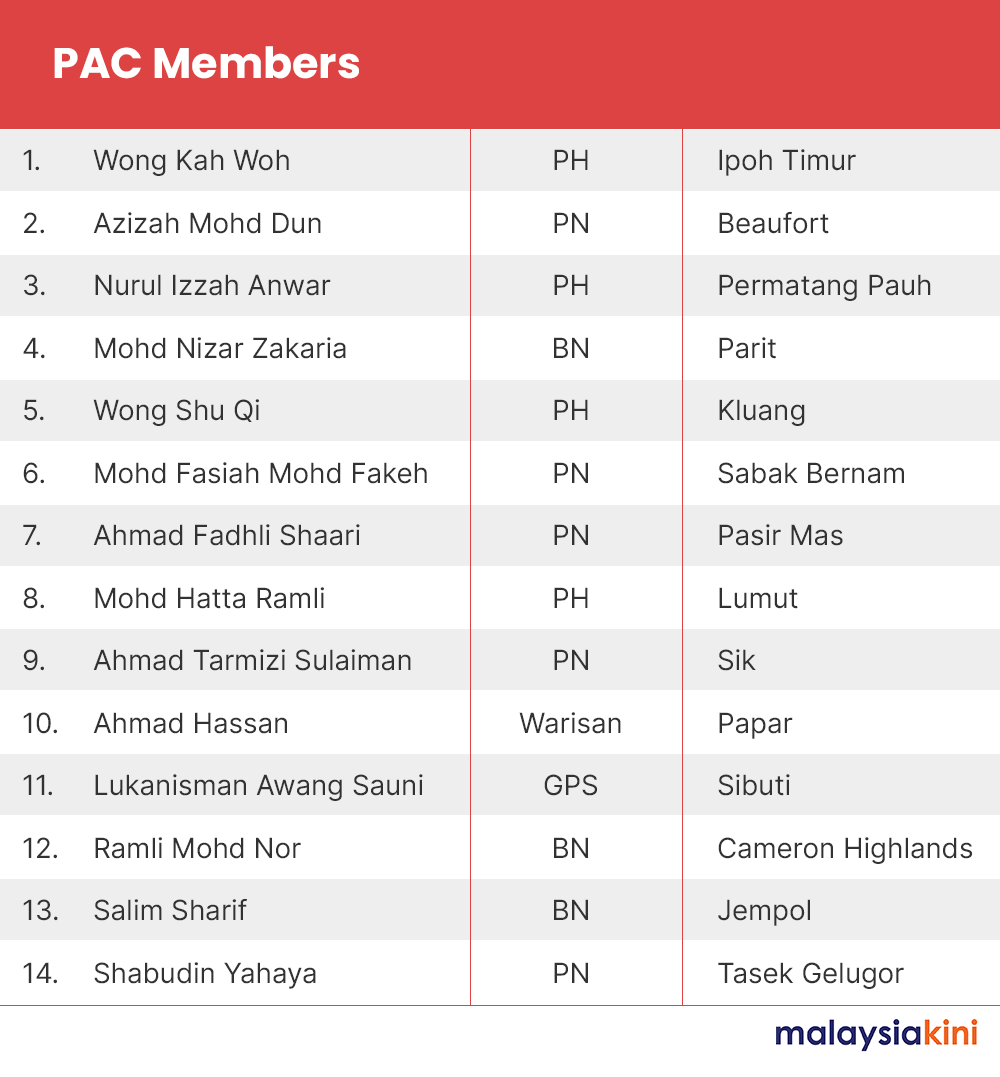In the past, the Dewan Rakyat’s Public Accounts Committee (PAC) had sometimes been called a “toothless tiger” - a creature with a loud roar but not a lot of bite.
That perception changed last month when the PAC released its long-awaited report on the procurement of littoral combat ships (LCS) for the navy.
The damning report uncovered the opaque nature of the security industry and revealed to Malaysians how they are footing a RM9 billion bill for a mismanaged project that was far behind schedule.
Red-faced, the government was forced to declassify other investigation reports on the project and even allowed a site visit at the yard where some of the six ships are being built.
However, due to the critical nature of the PAC report, the committee has come under fire from supporters of the former defence minister and prime minister who approved the project.
In response, PAC chairperson Wong Kah Woh has repeatedly denied allegations that his committee - which is bipartisan - is biased.
In a recent interview with Malaysiakini, Wong explained the purpose of the PAC, its inner workings, its impact, and the reforms seen so far.
What is the PAC’s mandate?
The PAC derives its powers from the Dewan Rakyat which chooses the committee chairperson and deputy chairperson.
Based on Standing Order 77(1), the PAC has the power to examine the accounts of the Malaysian government, the accounts of all public authorities, the reports of the auditor-general, and any other matters that “the committee may think fit” or matters referred to the PAC by the Dewan Rakyat.

“Basically, we have very wide power, we can go into anything under the sky that we want to go into,” said Wong.
How does the committee decide on the subject of its investigations?
The PAC currently has 14 members - nine representing the government and the rest from the opposition. Wong stressed that since 2018, the PAC always made decisions by consensus.
The primary source of possible investigation topics comes from the periodic briefings by the auditor-general who highlights red flags in his report that are suitable for the PAC to investigate.
However, other topics such as the LCS procurement, the automatic enforcement system (AES) controversy, the MySejahtera smartphone application, and the Covid-19 vaccine procurement were matters brought up by the PAC members and agreed upon.
“Back in December 2020, there was disquiet about the price of vaccines, method of procurement, and so on.
“We had to make a quick decision through WhatsApp to take up the matter,” said Wong, noting that they could not meet in person at the time because of Covid-19 restrictions.
Always by consensus
Since 2018, the PAC has always made decisions by consensus, stressed Wong.
“The PAC is a bipartisan committee. If we were to go by the majority, the committee would not be able to work… Of course, it is not easy to get a consensus.

“PAC members are very professional. When we come into the PAC committee meeting room, everyone will leave their party jacket outside.
“We are no longer DAP, PKR, Bersatu, or Umno when we meet as the PAC. We are all members tasked by the Dewan Rakyat to work for the nation,” he said.
Members of the PAC include three each from Umno and Bersatu, two each from PAS and DAP, and one each from PKR, Amanah, Warisan, and PBB.

How are PAC investigations conducted?
The PAC’s primary instrument is conducting hearings. The first step is to invite the controlling officer of the government ministry related to the investigation subject.
If the officer’s explanation suffices, the matter ends there. If not, the PAC will summon the cabinet minister and, if necessary, other witnesses such as the National Audit Department or project contractors.
Complicated cases such as the LCS saga required 10 hearing days and 21 witnesses.
Once the hearings are concluded, the PAC secretariat will begin a three-stage drafting process. Firstly, the secretariat will compile a report based on the Hansard (official parliamentary transcripts) and start writing a draft report.
“They will sit down to go through the Hansard, word-by-word, and then start preparing the draft. This can take up to two months,” said Wong.
The second stage involves a “housekeeping meeting”, where the secretariat will read out the entire report for the PAC’s scrutiny.

“If there are any amendments, we will do it there. That is why the report takes so many days to finalise.
“Every decision is by consensus. There were no heated arguments because facts and figures are being presented (to all members). Everyone has the freedom to air their views. Eventually, the PAC will reach a consensus,” he said.
According to Wong, the LCS report took four full days, with members going through 40-pages each day.
Once the final draft is completed, the third stage involves a final verification process where PAC members will be given a chance to go through the entire report one more time before it goes to print.
Why do we need the PAC to investigate matters already investigated by others?
As mentioned earlier, the PAC would often expand on investigations of the auditor-general, which periodically tables reports to Parliament.
Wong explained that the PAC’s mandate and wide powers meant that it can explore angles far beyond the terms of reference by other investigating bodies.
Legislative oversight, said Wong, also meant that details of government affairs that would otherwise be kept under wraps can be recorded in the Hansard and made public.
“Without the PAC, the government would not have declassified (other investigation reports on the LCS). They would feel no pressure.
“PAC (which is accountable to Malaysians) serves as a body to pressure the executive to do things in the right and better way,” he said.
PAC reports are tabled in Parliament but never debated. What sort of impact do the reports have?
Although PAC reports have never been debated in Parliament, they serve three functions, according to Wong.
Firstly, all PAC reports include the committee’s recommendations to the government, which at times can result in positive changes.
Citing PAC’s investigation on Covid-19 vaccine procurement, Wong said the PAC recommended the government fix the price of Sinovac vaccines and the government acceded.

Secondly, since 2018, the PAC conducts follow-up meetings with agencies or government ministries they investigate two or three months later to see what progress has been made since the reports and recommendations were published.
This, argued Wong, gave the PAC some bite as the relevant government agencies will have their progress reports recorded and published by the committee.
Finally, PAC reports can at times generate public interest and pressure for reforms. However, Wong concedes that not every topic generates interest.
“Not every PAC report would lead to a big reaction like the recent one for LCS.
“In a short period of two to three weeks after tabling the LCS report on Aug 4, the number of visitors to our web page had exceeded the number of visitors throughout 2021,” he said.
What has changed with the PAC?
One of the most obvious changes to the PAC since Wong took over as chairperson in 2020 was that all reports and transcripts produced by the committee after December 2021 became truly digital and thus machine-readable.
Prior to this change, all the online copies of PAC reports and transcripts were scans which were not searchable, making the study of the thick documents a laborious process.
According to Wong, the PAC only embarked on digitalisation in earnest last year. Most of the documents for investigations are now all hosted on a server and accessible by the PAC members at any time.
“Instead of very thick documents on our tables, everything is now digitalised. Less paper, fewer files,” he said.
Wong added that since 2018, the PAC added a “verification” process to their reporting. This was to ensure that the final printed version would be unanimously agreed upon by all PAC members.
This added process, said Wong, was to avoid a repeat of an incident in 2016 in which the then PAC chairperson Hasan Arifin admitted to deleting a sentence in the committee’s report on 1MDB without the approval of his peers.
“With our added verification procedure, what is printed will be 100 percent the same as the report that had been finalised by the committee,” said Wong. - Mkini





No comments:
Post a Comment
Note: Only a member of this blog may post a comment.